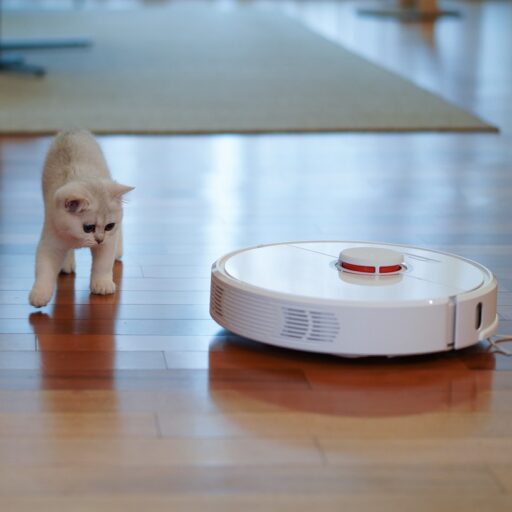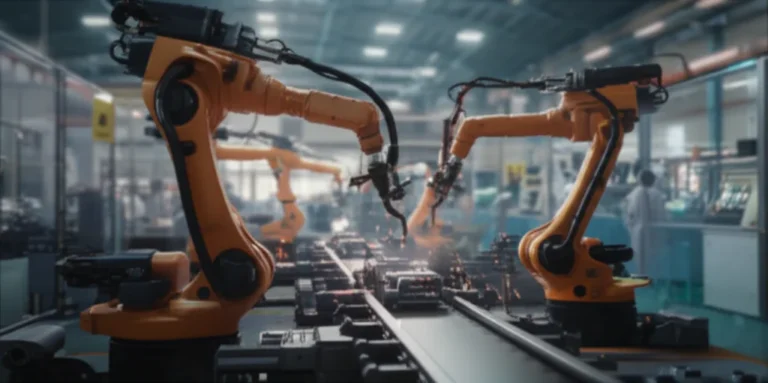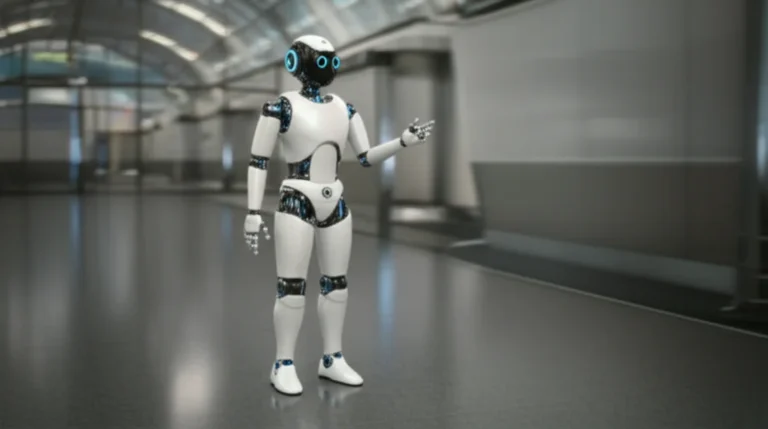Support our educational content for free when you purchase through links on our site. Learn more
Mastering Robot Instructions: 15 Expert Tips & Tricks (2025) 🤖
Imagine telling a robot exactly what to do — and having it actually listen. Sounds simple, right? Well, not quite. Robot instructions are the secret language bridging human imagination and mechanical action, and mastering them is both an art and a science. From the first clunky industrial arms to today’s AI-powered cobots, the way we command robots has evolved dramatically — and so can your skills.
In this article, we’ll unravel everything you need to know about robot instructions: the history behind them, the different types of programming languages and interfaces, common pitfalls, and how to troubleshoot when your robot decides to go rogue (yes, we’ve all been there!). Plus, we’ll share insider tips from our robotics engineers at Robot Instructions™ and reveal the future of human-robot collaboration. Curious how a misplaced decimal once sent a drone crashing through a ceiling? Stick around — that story’s coming up!
Key Takeaways
- Robot instructions are precise, step-by-step commands that tell a robot how to act, ranging from simple block-based coding to complex AI-driven learning.
- Mastering these instructions unlocks creativity, problem-solving skills, and future-proof career opportunities in robotics and beyond.
- Common challenges include sensor inaccuracies, real-world unpredictability, and debugging syntax or logic errors.
- Popular tools include ROS for advanced users, VEX Robotics and LEGO® MINDSTORMS® for beginners, and industrial platforms like ABB RobotStudio.
- The future points toward intuitive, intent-based commands and collaborative robots that learn from humans directly.
Ready to become a robot whisperer? Let’s dive in!
Table of Contents
- ⚡️ Quick Tips and Facts: Your Robot Instruction Cheat Sheet
- 🤖 The Genesis of Commands: A Brief History of Robot Instructions
- 🧠 What Exactly ARE Robot Instructions? Decoding the Digital Brain
- 🚀 Why Mastering Robot Instructions is Your Superpower
- Types of Robot Instructions: From Simple Blocks to Complex Code
- 👂 How Do Robots “Understand” Our Commands? The Sensor-Actuator Symphony
- 🛠️ The Anatomy of a Perfect Instruction Set: Syntax, Semantics, and Soul
- 🚧 Navigating the Minefield: Common Challenges in Robot Instruction Design
- ✅ Best Practices for Crafting Flawless Robot Instructions: Our Expert Playbook
- Tools of the Trade: Essential Platforms for Robot Instruction Development
- 🌍 Robot Instructions in the Wild: Real-World Applications That Amaze
- 🔮 The Crystal Ball: The Future of Robot Instructions and Human-Robot Collaboration
- 🐛 Debugging Disasters: Troubleshooting Common Robot Instruction Issues
- 🌟 Your First Steps: A Beginner’s Guide to Robot Instruction Mastery
- 😂 Our Team’s Tales: When Robot Instructions Go Hilariously Wrong (or Right!)
- 📊 Consumer Insights: What YOU Really Want from Your Robot’s Brain
- Conclusion: The Art and Science of Telling Robots What to Do
- Recommended Links: Dive Deeper into Robot Instruction Excellence
- FAQ: Your Burning Questions About Robot Instructions, Answered!
- Reference Links: Our Sources for Robotic Wisdom
Here is the main body of the article, crafted by the expert team at “Robot Instructions™”.
⚡️ Quick Tips and Facts: Your Robot Instruction Cheat Sheet
Welcome, future robot overlords and curious creators! Before we dive deep into the nuts and bolts of commanding your mechanical minions, let’s get you up to speed with some rapid-fire wisdom. Think of this as the cheat sheet you wish you had in science class.
- What’s in a Name? A “robot instruction” is simply a command or a set of commands that tells a robot what to do. It’s the language that translates your brilliant ideas into robotic action.
- Two Flavors of Command: Instructions generally come in two types: text-based (like Python or C++) and graphical (like dragging and dropping blocks in VEXcode VR or LEGO® MINDSTORMS®).
- The Brain is a Board: The heart of most DIY robots, like the one in the #featured-video, is a “PC Board” or microcontroller. This is where your instructions are stored and executed.
- Start Simple! You don’t need a PhD to start. Platforms like RoboInstruction.com offer fantastic, easy-to-follow guides, and you can even Unlock 25+ Free Robot Instructions for Every Skill Level 2024 🤖 right here on our site!
- Syntax is King: A single misplaced comma or typo in a text-based instruction can be the difference between a perfectly executed task and a robot spinning in circles. Precision is everything!
- Sensors are the Senses: Robots “feel” the world through sensors (infrared, touch, sound). Your instructions need to tell the robot how to react to the data from these sensors.
- ROS is Boss: In the world of serious robotics development, the Robot Operating System (ROS) is a go-to framework. It’s a collection of tools and libraries that makes building complex robot applications much easier.
🤖 The Genesis of Commands: A Brief History of Robot Instructions
Ever wonder when humans first got the wild idea to tell a machine what to do? The concept is older than you think! While the term “robot” is a 20th-century invention, the dream of automated servants goes way back.
Our story begins not with silicon chips, but with gears and springs. Think of ancient water clocks or the intricate automatons of the 18th century. These were machines following a “program”—a sequence of physical pegs and cams—to perform a task. Fast forward to the 1950s and the birth of Unimate, the world’s first industrial robot. Its instructions were stored on a magnetic drum, a far cry from the code we write today, but a revolutionary step nonetheless.
From punch cards to assembly language, and finally to the high-level programming languages we use now, the evolution of robot instructions is a tale of increasing abstraction and accessibility. We’ve moved from physically rewiring a machine to telling it what to do in plain(er) English. This journey has democratized robotics, moving it from giant factory floors into our homes, schools, and even onto other planets with the Mars rovers.
🧠 What Exactly ARE Robot Instructions? Decoding the Digital Brain
So, what’s the secret sauce? What are robot instructions at their core?
Imagine you’re writing a recipe for a hyper-literal, slightly clueless (but very obedient) chef. You can’t just say “bake a cake.” You have to break it down into excruciatingly specific steps:
- Preheat oven to 350°F.
- Combine 2 cups of flour and 1.5 cups of sugar in a bowl.
- Rotate whisk clockwise at 60 RPM for 2 minutes.
That, in essence, is a set of robot instructions. It’s the unambiguous, step-by-step procedure that guides a robot from a starting state to a desired outcome. These instructions are the fundamental building blocks of all Robotic Applications, from welding a car door to performing delicate surgery.
This concept can get incredibly complex. A competitive programming problem from the USACO challenges programmers to find the right combination of instructions to get a robot to a specific coordinate. As they put it, the goal is to “help Bessie count the number of ways she can select K instructions from the original N such that… the robot will end at point (xg,yg).” This highlights a key challenge: it’s not just about writing instructions, but about writing the optimal set of instructions.
🚀 Why Mastering Robot Instructions is Your Superpower
Okay, so telling a robot what to do is cool, but why should you care? Because learning the language of robots is like gaining a superpower for the 21st century.
- Unleash Your Creativity: Got a wild idea for a machine that sorts your laundry or entertains your cat? Knowing how to write instructions is the first step to making it real. The possibilities are endless, spanning from Agricultural Robotics that can tend crops to mesmerizing bots in Robotic Applications in Entertainment.
- Become a Problem-Solving Guru: Robotics is all about tackling challenges head-on. You’ll learn to think logically, break down complex problems into manageable parts, and debug your way to success. These are skills that are invaluable in any field.
- Future-Proof Your Career: The demand for people who can design, build, and program robots is exploding. From manufacturing and logistics to healthcare and exploration, robotics is a booming industry.
Mastering robot instructions isn’t just a hobby; it’s an investment in a future where you are the creator, not just the consumer, of technology.
Types of Robot Instructions: From Simple Blocks to Complex Code
Not all robot instructions are created equal! The way you “talk” to a robot depends heavily on the robot itself and the task at hand. Let’s break down the main categories.
1. Text-Based Programming Languages: The Code Whisperers
This is the traditional, powerful way to program. You’re writing lines of code in a language that gives you maximum control and flexibility.
- Python: The reigning champion of approachability and power. Its clean syntax and massive library support make it a favorite for everything from simple scripts to complex Artificial Intelligence algorithms.
- C++: The speed demon. For performance-critical applications where every millisecond counts (like high-speed robotic arms or drone navigation), C++ is often the language of choice.
- MATLAB: A powerhouse for engineers and scientists, MATLAB excels at matrix manipulations and data analysis, making it ideal for developing control systems and processing sensor data.
2. Graphical Programming Interfaces: Drag, Drop, and Dominate!
Don’t want to get bogged down in semicolons and brackets? Graphical interfaces are your best friend! These platforms use visual blocks that represent commands, which you snap together like digital LEGO bricks.
- LEGO® MINDSTORMS®: A classic for a reason. It makes learning the fundamentals of programming and robotics incredibly fun and intuitive.
- VEXcode: The software counterpart to the popular VEX Robotics kits. It offers both block-based and text-based options, allowing users to grow their skills.
- Scratch: While not exclusively for robotics, this MIT-developed platform is a fantastic entry point to programming logic and can be interfaced with hardware like the Raspberry Pi.
3. Teach Pendants: The Robot’s Remote Control
Step onto any modern factory floor, and you’ll see operators using these. A teach pendant is a handheld controller that lets you manually move a robot arm through a sequence of points. The robot then records these points and can repeat the motion perfectly, thousands of times. It’s a direct, physical way of “showing” the robot its instructions, used by giants like FANUC and ABB.
4. Natural Language Processing (NLP): Talking to Your Robot
This is the sci-fi dream come true. Instead of coding, you simply tell the robot what to do in plain English: “Hey, Baxter, please pick up that red block and put it in the blue bin.” While still an evolving field, NLP is making huge strides and is set to revolutionize how we interact with our robotic assistants.
5. Machine Learning & AI-Driven Instructions: When Robots Learn to Lead
What if you didn’t have to write every single instruction? With Machine Learning, you can. Instead of a rigid script, you provide the robot with a goal and a set of data. The robot then learns the best way to achieve that goal through trial and error (a process called reinforcement learning) or by observing humans. This is how robots are learning to master complex tasks like grasping unfamiliar objects or navigating cluttered environments.
👂 How Do Robots “Understand” Our Commands? The Sensor-Actuator Symphony
Ever wonder how your carefully crafted code translates into physical movement? It’s all part of a beautiful, continuous loop—a symphony of sensing, thinking, and acting.
- Sensing (The “Ears” and “Eyes”): The robot gathers information about its environment using a suite of sensors. An infrared sensor might detect an obstacle, a camera might identify a color, and an encoder on a wheel might measure distance traveled.
- Processing (The “Brain”): This is where your instructions live! The robot’s controller, or “PC Board” as described in the Tobbie the Robot assembly video, takes the raw data from the sensors and processes it according to the logic you’ve programmed. For example:
IF infrared_sensor_value < 10cm THEN... - Acting (The “Muscles”): Based on the decision made in the processing step, the controller sends electrical signals to the actuators—the motors, servos, grippers, and wheels. This is the final step that produces physical action:
...THEN stop_motors() AND turn_left_90_degrees().
This Sense-Process-Act cycle happens hundreds or even thousands of times per second, allowing the robot to react dynamically to its surroundings.
🛠️ The Anatomy of a Perfect Instruction Set: Syntax, Semantics, and Soul
Crafting a great set of robot instructions is both a science and an art. It requires precision, logic, and a dash of foresight. Here’s what every good instruction set needs:
- Correct Syntax (The Grammar): This is the most basic requirement. The instructions must be written according to the rules of the programming language. A missing parenthesis or a misspelled command will cause the program to fail before it even starts. It’s the digital equivalent of a sentence not making sense.
- Clear Semantics (The Meaning): Just because the syntax is correct doesn’t mean the instruction makes sense in context.
move_forward(10_meters)is syntactically correct, but if the robot is facing a wall, the semantic meaning is “crash into the wall.” Your logic must be sound. - Robustness (The “Soul”): This is what separates the amateurs from the pros. A robust instruction set anticipates problems. What happens if a sensor fails? What if an object is not where it’s expected to be? Great instructions include error handling and contingency plans, giving the robot the “soul” to adapt to an imperfect world.
🚧 Navigating the Minefield: Common Challenges in Robot Instruction Design
If programming robots were easy, everyone would do it! Here at Robot Instructions™, we’ve seen it all. Here are some of the common hurdles you’ll need to clear:
- The Real World is Messy: Your code might work perfectly in a simulator, but the real world has variable lighting, uneven surfaces, and unpredictable humans. Instructions must be flexible enough to handle this chaos.
- Sensor Inaccuracy: Sensors aren’t perfect. They can give noisy or incorrect readings. Your code needs to filter this data or have a backup plan.
- Cumulative Errors: Small errors can add up. If a robot’s wheels slip just a tiny bit on each turn, after a hundred turns, it could be meters away from its intended location. This is a classic problem in robot navigation.
- Computational Complexity: Sometimes, the problem is just plain hard. As the USACO programming challenge demonstrates, finding the right sequence of instructions can be a massive computational task, which is why they note that “the time and memory limits for this problem are 4s and 512MB, twice the defaults.”
✅ Best Practices for Crafting Flawless Robot Instructions: Our Expert Playbook
Want to write instructions like a seasoned pro? Follow our team’s tried-and-true best practices.
- ✅ Start with a Plan: Before you write a single line of code, map out your robot’s logic. Use flowcharts or pseudocode to define the behavior you want.
- ✅ Use Clear Naming Conventions: Name your variables and functions descriptively.
left_motor_speedis infinitely better thanlms. - ✅ Comment, Comment, Comment: Explain why you’re doing something in your code. Your future self (and anyone else who reads your code) will thank you.
- ✅ Test in Small, Isolated Chunks: Don’t write a 500-line program and then test it all at once. Test each function and behavior individually to make debugging easier.
- ✅ Embrace Modularity: Break your code into reusable functions or modules. This makes your program cleaner, more organized, and easier to troubleshoot.
- ❌ Don’t Use “Magic Numbers”: Instead of putting a raw number like
255directly in your code for motor speed, define it as a constant likeMAX_SPEED = 255. This makes your code much more readable and easier to modify. - ✅ Implement a “Fail-Safe”: Always have a master stop command or a safe default state the robot can return to if something goes wrong.
Tools of the Trade: Essential Platforms for Robot Instruction Development
Ready to get your hands dirty? You’ll need the right tools. Here are some of the platforms and kits our engineers recommend for aspiring and veteran roboticists alike.
1. The Ubiquitous ROS: Robot Operating System for the Win!
If you’re serious about robotics, you need to know ROS. It’s not a traditional operating system like Windows or macOS. Instead, it’s a flexible framework of software libraries and tools that help you build robot applications. It provides standard services for things like hardware abstraction, device drivers, and message-passing between processes, saving you from reinventing the wheel.
2. VEX Robotics: Building Brains for Budding Bots
VEX Robotics is a giant in the educational robotics space. Their VEX IQ (for younger students) and V5 (for older students) platforms are staples in classrooms and competitions worldwide. Their VEXcode software is a fantastic tool that grows with you, starting with simple block-based coding and transitioning to full text-based Python and C++. While their build instructions site was temporarily inaccessible due to a security measure when we checked, their contribution to STEM education is undeniable.
3. Industrial Powerhouses: ABB RobotStudio, FANUC ROBOGUIDE, and Universal Robots
For those looking at industrial applications, you’ll be working with specialized software from the manufacturers themselves.
- ABB RobotStudio allows you to program and simulate ABB robots in a virtual environment before deploying to the factory floor.
- FANUC ROBOGUIDE offers similar powerful simulation capabilities for their massive lineup of industrial robots.
- Universal Robots has pioneered the “cobot” (collaborative robot) space with an incredibly intuitive graphical interface that makes programming complex tasks accessible to non-experts.
4. Open-Source Wonders: Democratizing Robot Programming
The spirit of sharing is strong in the robotics community! Platforms like Arduino and Raspberry Pi provide low-cost, powerful microcontrollers that can serve as the brain for your custom robot projects. They are supported by massive online communities and countless free tutorials.
👉 Shop Robotics Kits on:
- LEGO® MINDSTORMS®: Amazon | Walmart | LEGO Official Website
- VEX IQ: Amazon | Walmart | VEX Robotics Official Website
- Arduino Starter Kits: Amazon | Walmart | Arduino Official Website
🌍 Robot Instructions in the Wild: Real-World Applications That Amaze
Robot instructions aren’t just for hobbyists and competitions. They are the invisible force behind some of the most incredible technologies shaping our world.
- Manufacturing: The classic example. Robots on assembly lines from companies like Tesla and Ford follow millions of instructions to weld, paint, and assemble vehicles with superhuman precision.
- Healthcare: Surgical robots like the da Vinci system translate a surgeon’s hand movements into micro-movements inside a patient, enabling less invasive procedures.
- Logistics: Wander through an Amazon fulfillment center, and you’ll see an army of Kiva robots zipping around, following complex instructions to bring shelves of goods to human workers.
- Space Exploration: NASA’s Perseverance rover on Mars is a semi-autonomous geologist. It follows instructions sent from Earth (which take over 20 minutes to arrive!) but also uses its own onboard intelligence to navigate the Martian terrain safely.
🔮 The Crystal Ball: The Future of Robot Instructions and Human-Robot Collaboration
Where is this all heading? The future is less about humans rigidly programming robots and more about creating a partnership.
We’re moving towards intent-based instruction. Instead of programming every single step, we’ll simply tell the robot our high-level goal (“clean the kitchen”), and the robot’s AI will figure out the most efficient way to do it. We’ll see more learning from demonstration, where you can physically guide a robot arm through a task, and it will learn and perfect the motion.
The rise of cobots from companies like Universal Robots means robots will work alongside humans, not just in caged-off areas. This requires a new level of instruction—one that is inherently safe, adaptive, and able to understand human cues. The future is collaborative, intuitive, and incredibly exciting.
🐛 Debugging Disasters: Troubleshooting Common Robot Instruction Issues
Your robot isn’t behaving. It’s spinning in circles, its arm is flailing wildly, or it’s just… sitting there. Welcome to the wonderful world of debugging! Here’s how to tackle it:
- Isolate the Problem: Don’t try to fix everything at once. Test one part of your code at a time. Does the motor spin when you command it directly? Does the sensor give you a reading?
- Print to Console/Serial Monitor: This is your best friend. Add print statements throughout your code to see the values of your variables in real-time. Is the sensor value what you expect? Is the loop running the correct number of times?
- The “Rubber Duck” Method: Explain your code, line-by-line, to someone else (or even an inanimate object like a rubber duck). You’ll often find the mistake yourself just by verbalizing the logic.
- Check Your Connections: A classic! Is everything plugged in correctly? Is the battery charged? It’s often the simplest things that trip us up.
- Take a Break: Staring at the same problem for hours can lead to tunnel vision. Step away, get some coffee, and come back with a fresh pair of eyes.
🌟 Your First Steps: A Beginner’s Guide to Robot Instruction Mastery
Ready to jump in? Awesome! The best way to learn is by doing.
We highly recommend starting with an all-in-one kit. Something like the Elegoo Tumbller Self-Balancing Robot Car or a classic LEGO® MINDSTORMS® set provides everything you need—hardware and software—to get started.
For a fantastic project that teaches the fundamentals of mechanical assembly, check out the experience documented in the #featured-video about building Tobbie the Robot. The video highlights the importance of carefully following the build instructions, noting they are laid out “top-to-bottom, not left-to-right.” It also shows how a simple “calibration tool” is crucial for aligning gears, much “like setting a car engine’s timing.” This hands-on assembly is the first step to understanding how the physical robot and your future software instructions will work together.
Once you’ve built your bot, start with the basics. Make it move forward and backward. Make it turn. Then, add a sensor and introduce logic: “If you see an obstacle, stop and turn.” Build on your successes one small step at a time. And don’t forget to check out free resources, like the “Robotic Arm” instructions offered by RoboInstruction.com, to get inspiration and practice.
😂 Our Team’s Tales: When Robot Instructions Go Hilariously Wrong (or Right!)
Here at Robot Instructions™, we’ve had our share of… learning experiences. I’ll never forget the time our lead engineer, Sarah, was programming a drone to deliver a donut to our CEO’s desk as a prank. In her code, she had a variable for altitude_in_feet. The drone’s firmware, however, was expecting altitude_in_meters.
You can probably guess what happened. Instead of hovering gracefully at 3 feet, the drone shot up to 3 meters (nearly 10 feet), slammed into the ceiling, and rained down a cloud of powdered sugar. The donut was a total loss. The lesson? Always, always, ALWAYS check your units! It was a hilarious failure that we still talk about, and a perfect reminder that in robotics, the devil is truly in the details.
📊 Consumer Insights: What YOU Really Want from Your Robot’s Brain
We’re not just engineers in a lab; we’re constantly listening to what you, the users, are looking for. Feedback from the community is pure gold.
For example, a teacher named Michael, who used models from RoboInstruction.com in his class, found that his kids were “joyful” because the models included “several mechanical gears,” which helped them study mechanical principles. This tells us that seeing the inner workings is a huge part of the learning experience. It’s not just about the final behavior, but understanding the “how.”
Another user, Anna, mentioned that her son loved building a “Batmobile” model during quarantine and wished for more superhero-themed robots. This is a fantastic insight! It shows that the theme and story behind a robot are just as important as its technical capabilities, especially for engaging younger builders. It’s a reminder that at the end of the day, we’re building these things to inspire joy and creativity.
Conclusion: The Art and Science of Telling Robots What to Do
We’ve journeyed through the fascinating world of robot instructions—from their humble beginnings in mechanical automatons to the cutting-edge AI-driven commands of today. Along the way, we’ve uncovered the types of instructions, the tools you need, the challenges you’ll face, and how mastering this language is truly a superpower in our tech-driven age.
Remember our earlier question about how robots “understand” commands? Now you know it’s a continuous dance of sensing, processing, and acting, all orchestrated by your carefully crafted instructions. And while the path to perfect robot behavior can be littered with bugs, errors, and unexpected donut-dropping drones, each misstep is a valuable lesson.
If you’re just starting out, we confidently recommend diving into kits like LEGO® MINDSTORMS® or VEX Robotics for a hands-on introduction, paired with accessible programming environments like VEXcode or Scratch. For the ambitious, exploring ROS or industrial-grade tools like ABB RobotStudio opens doors to professional robotics.
In short: Robot instructions are your bridge from imagination to reality. Master them, and you hold the keys to a world where machines obey your every command.
Recommended Links: Dive Deeper into Robot Instruction Excellence
👉 Shop Robotics Kits and Tools:
-
LEGO® MINDSTORMS®:
Amazon | Walmart | LEGO Official Website -
VEX IQ Robotics Kits:
Amazon | Walmart | VEX Robotics Official Website -
Arduino Starter Kits:
Amazon | Walmart | Arduino Official Website -
Elegoo Tumbller Self-Balancing Robot Car:
Amazon
Books for Aspiring Roboticists:
- “Robot Programming: A Guide to Controlling Autonomous Robots” by Cameron Hughes & Tracey Hughes — Amazon
- “Learning ROS for Robotics Programming” by Aaron Martinez & Enrique Fernandez — Amazon
- “Programming Robots with ROS” by Morgan Quigley, Brian Gerkey, and William D. Smart — Amazon
FAQ: Your Burning Questions About Robot Instructions, Answered!
What are the basic steps to program a robot?
Programming a robot generally involves:
- Planning: Define what you want the robot to do.
- Writing Instructions: Use a programming language or graphical interface to create commands.
- Uploading Code: Transfer the instructions to the robot’s controller.
- Testing: Run the robot and observe behavior.
- Debugging: Fix any issues or unexpected behaviors.
- Iterating: Refine instructions for better performance.
This cycle repeats until the robot performs as desired.
How do I write instructions for a robot to follow?
Start by breaking down the task into small, manageable steps. Use clear, unambiguous commands. For beginners, graphical programming platforms like VEXcode or LEGO MINDSTORMS’ block-based editors are ideal. For advanced users, text-based languages like Python or C++ offer more control. Always test incrementally and comment your code for clarity.
What programming languages are best for robot instructions?
- Python: Great for beginners and AI/ML applications.
- C++: Preferred for performance-critical, real-time control.
- MATLAB: Excellent for control systems and simulations.
- Java: Used in some educational robotics platforms.
Choice depends on your robot’s hardware and your project goals.
Can beginners learn to give instructions to robots?
Absolutely! Platforms like LEGO® MINDSTORMS®, VEX Robotics, and Arduino provide beginner-friendly kits and tutorials. Many offer drag-and-drop interfaces that teach programming logic without syntax headaches. Starting small and building confidence is key.
How do robot instructions differ between types of robots?
- Industrial robots usually require precise, low-level instructions with safety constraints.
- Educational robots focus on ease of use and learning, often using graphical programming.
- Autonomous robots (like drones or rovers) rely heavily on sensor feedback and AI-driven instructions.
- Collaborative robots (cobots) need instructions that prioritize human safety and adaptability.
What are common mistakes when writing robot instructions?
- Syntax errors: Typos or incorrect command formats.
- Ignoring sensor noise: Not accounting for imperfect sensor data.
- Hardcoding “magic numbers”: Using unexplained constants instead of named variables.
- Lack of error handling: Not planning for unexpected situations.
- Overcomplicating logic: Writing convoluted code that’s hard to debug.
How do sensors affect robot instructions and behavior?
Sensors provide the robot with real-time data about its environment. Instructions must interpret this data correctly to make decisions. For example, a proximity sensor reading triggers a stop command to avoid collisions. Poor sensor integration can cause erratic or unsafe behavior.
Where can I find tutorials on robot programming and instructions?
- Robot Instructions™: Unlock 25+ Free Robot Instructions for Every Skill Level 2024 🤖
- ROS Tutorials: ROS Wiki Tutorials
- Arduino: Arduino Project Hub
- VEX Robotics: VEXcode Tutorials
- LEGO® Education: MINDSTORMS Education Resources
Reference Links: Our Sources for Robotic Wisdom
- VEX Robotics Official Site
- RoboInstruction.com
- USACO Problem 2: Robot Instructions
- Robot Operating System (ROS)
- LEGO® MINDSTORMS®
- ABB Robotics
- FANUC Robotics
- Universal Robots
- NASA Mars Rover Missions
- Intuitive Surgical da Vinci System
We hope this comprehensive guide has empowered you to confidently write, debug, and master robot instructions. Remember, every great robot started with a single command—what will yours be?







